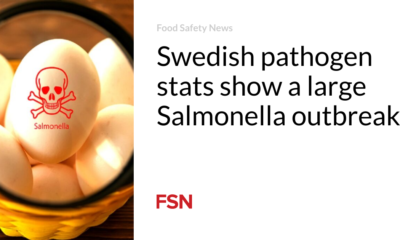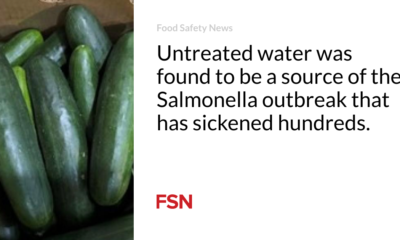Food
Uncooked pork liver linked to hepatitis E outbreak in China

According to a recent report, poorly cooked pork liver was the suspected source of a hepatitis E outbreak in China in 2022.
In July and August 2022, an outbreak of hepatitis E was reported in a nursing home in Hangzhou, Zhejiang province.
A case-control study was conducted to identify risk factors for the outbreak. Of the 722 people in the nursing home, 77 were diagnosed with hepatitis E. The most affected group were caregivers, followed by care recipients and nurses. Among them, 18 had symptoms such as jaundice, fever and loss of appetite.
The average age of people infected with the hepatitis E virus (HEV) was almost 60 years old and 59 patients were women and 18 men, according to the study published in the International Journal of Food Microbiology.
From July 31 to August 10, 2022, three cases of hepatitis E were reported at the nursing home and the local Center for Disease Control sent staff to the site to verify the incident and conduct epidemiological investigation.
The first patient was a 59-year-old married woman who was an informal caregiver at the nursing home. In late July 2022, she experienced symptoms such as poor appetite, nausea, aversion to fatty foods, fatigue, yellow urine and jaundice in the eyes. On July 31, she was diagnosed with hepatitis E in the hospital. The second patient was a 59-year-old married caregiver who developed poor appetite, yellow urine, and yellow discoloration of the eyes on July 31. He was diagnosed with hepatitis E on August 2.
A case-control study found that consuming pork liver and providing raw fruits and vegetables from the cafeteria were risk factors for this outbreak.
Cooking time and bad practices
Researchers said the investigation found poor conditions in the nursing home’s canteen and that the cooking time of pork liver was too short. A monitoring video showed that canteen staff did not separate raw and cooked food and that pork livers were cooked for only 2 minutes and 10 seconds. Other studies have shown that the inactivation time of HEV in the liver at 71 degrees C (159.8 degrees F) is five minutes or longer.
Hygienic conditions in the canteen were poor and cockroaches were found on site. Zoning laws were not strictly enforced and there was a lack of separation between raw and cooked foods. Although a steam pot was available to disinfect tableware, it was rarely used.
Because raw and cooked foods were not sufficiently separated, this could lead to HEV contamination through cafeteria workers’ hands with fruits and vegetables, researchers said.
There were no leftover food samples in the canteen. Fresh samples of pig livers collected from suppliers tested negative for HEV.
Control measures included isolating and treating patients, conducting deep cleaning and disinfection, and vaccination against HEV was administered after the outbreak.
“Canteen staff should be warned of the importance of sufficient cooking time and temperature during stir-frying to ensure inactivation of the HEV. Measures such as strengthening hygiene supervision in the food industry and recommending vaccination for risk groups are also necessary,” scientists said.
(To sign up for a free subscription to Food Safety News, click here.)













